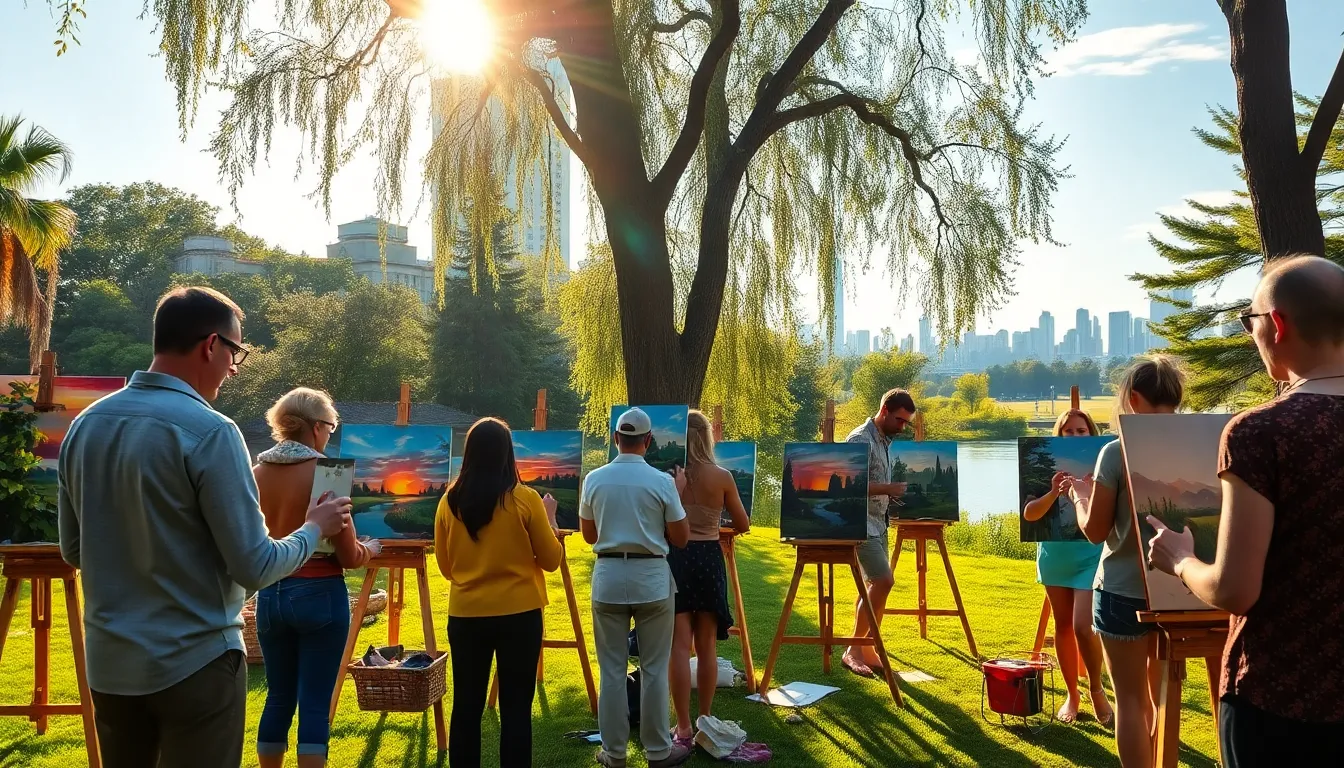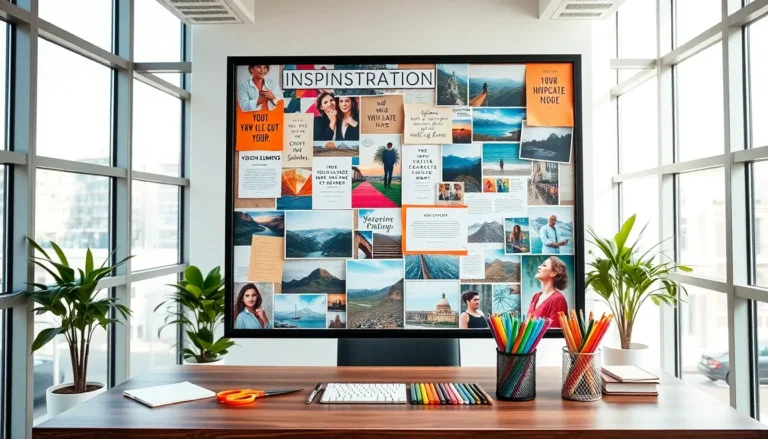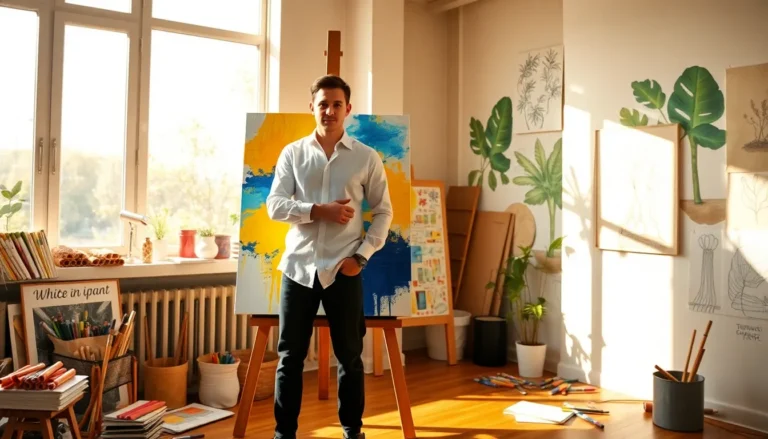Table of Contents
ToggleArt is all around us, and let’s face it, sometimes inspiration strikes like lightning. At other times, artists find themselves staring at a blank canvas as if it’s judging their very existence. But fear not. Whether you’re seeking the tranquility of nature or the vibrancy of urban life, this guide is here to unleash your creative spirit. This isn’t just a list of ideas: it’s a treasure trove designed to transform that creative block into a vibrant masterpiece. So roll up your sleeves, and let’s jump into the world of painting inspiration.
Exploring Different Sources of Inspiration

Nature as a Source of Creative Fuel
Nature offers an endless palette that inspires artists worldwide. From the calming blues of the ocean to the fiery reds of a sunset, the outdoors can breathe life into any painting. Imagine a serene forest scene, complete with dappled sunlight filtering through the leaves. Painting en plein air, or outdoors, often captures the atmosphere in ways photographs miss. Whether through landscapes, floral compositions or the intricate details of wildlife, nature gives artists a direct connection to beauty and tranquility.
Urban Landscapes and City Life
Cities buzz with energy that can ignite creativity like nothing else. The juxtaposition of towering skyscrapers against serene parks offers countless perspectives for artistic expression. Think traffic lights casting vibrant reflections or the shadows of bustling pedestrians. Artists can draw on the vibrancy of street life, encapsulating the spirit of a city in color and form. Urban scenes offer a raw, gritty backdrop that can evoke emotions, making it a fantastic source of inspiration.
Art History and Classic Masterpieces
Art history is a treasure chest filled with gems waiting to inspire modern artists. Studying the techniques of the great masters like Van Gogh or Monet can shed light on different styles and approaches. Why not take a classic and reinterpret it in a modern context? For instance, placing a modern twist on a famous still life can meld the past with the present beautifully.
Personal Experiences and Emotions
Every artist has a unique story to tell. Tapping into personal experiences often leads to the most impactful works. Those moments of joy, sadness, or nostalgia can become a canvas of emotion. Artists might explore abstract representation of feelings or create literal depictions of pivotal life experiences. This connection can resonate profoundly, allowing others to empathize and engage with the art intimately.
Using Literature and Poetry for Visual Ideas
Literature and poetry are marvelous wells of inspiration. The evocative language in a poem can spark imagery that dances across a canvas. For example, imagine illustrating a line from a favorite poem, capturing not just the imagery, but the emotions tied to those words. This can give rise to paintings that speak volumes, blending language with visuals in a dynamic fusion. Consider drawing from specific themes, characters, or even the overall mood of a story. Turning the pages of a novel could lead to vibrant scenes or conceptual pieces that challenge viewers’ perceptions.
Techniques to Spark Creativity
Experimenting with Different Mediums
Sometimes, the best way to inspire creativity is to step outside one’s comfort zone. Experimenting with various mediums can lead to unexpected results. From watercolors to acrylics, or even mixed media, exploring new materials can unlock a world of creativity. Each medium has its own character and challenges, embracing them can open doors to new techniques and styles, evolving an artist’s personal expression.
Collaborative Projects and Group Sessions
Collaboration can breathe fresh life into one’s artistic journey. Working alongside other artists often introduces new ideas and techniques. Group sessions, critiques, or even just sharing a studio can inspire creativity in ways solitary work cannot. This environment fosters feedback, which can lead to new insights and improved techniques. After all, two brains are better than one, especially when it comes to art.
Setting Up an Inspiring Workspace
The physical environment can greatly influence creativity. A cluttered space might stifle inspiration, while a well-organized, visually appealing workspace invites creativity to flourish. Artists might consider personalizing their workspace with items that evoke joy or motivation, like plants, artwork, or even mood boards. The right lighting, perhaps natural or soft warm light, can also drastically alter an artist’s mood when they’re ready to create. It’s about creating an inspiring environment that transitions seamlessly from a space of chaos to a sanctuary of creativity.




